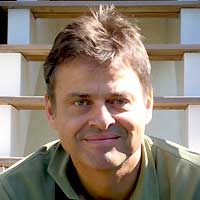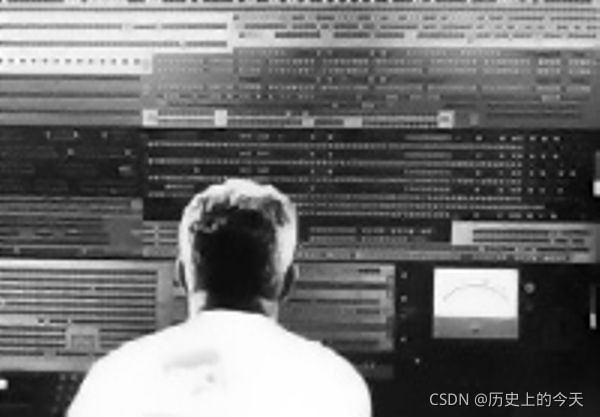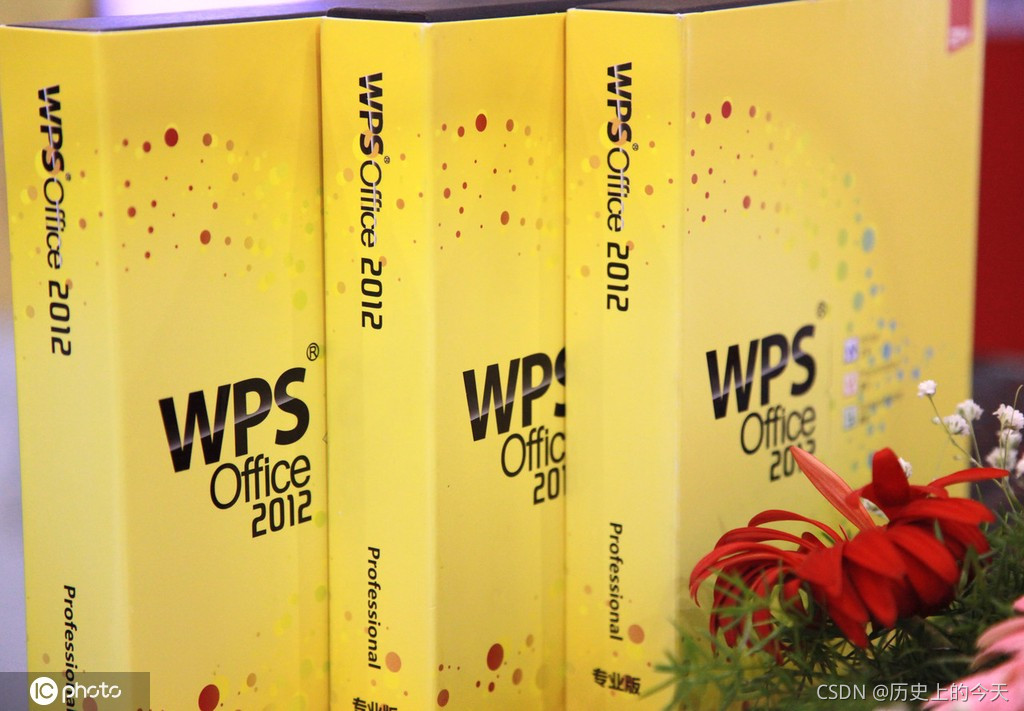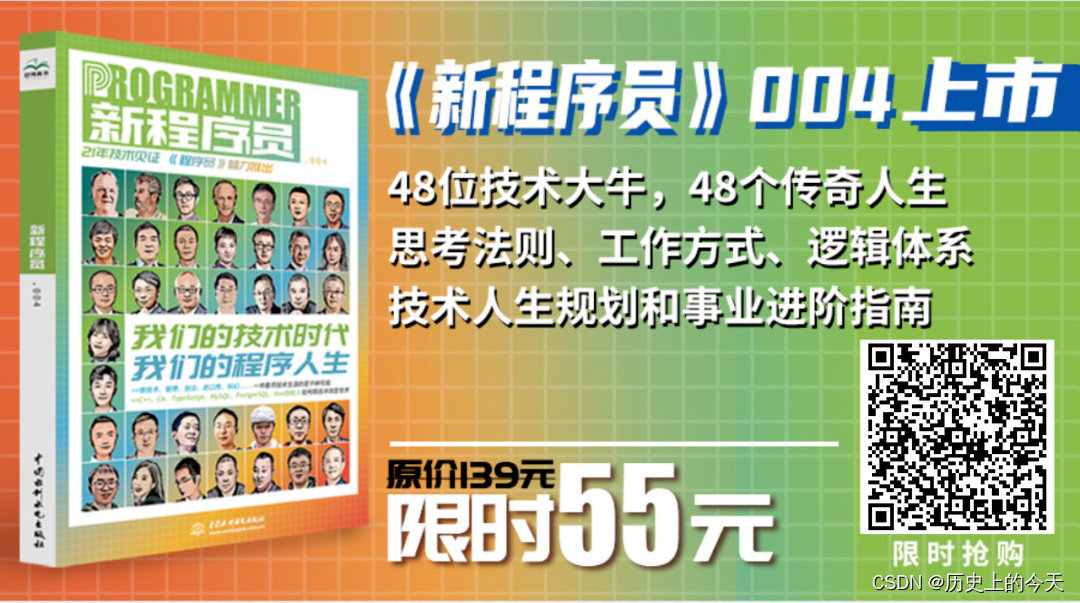Finishing | Wang Qilong
Through "today in history", we can see the future from the past, and we can also change the future from the present.
Today is September 5, 2022. Today in history is the day the Coca-Cola Company was born. The Coca-Cola Company is one of the largest manufacturers of soft drinks, syrups, juices, coffee and tea in the United States. Its predecessor can be traced back to a company founded in 1886. Beverage business. The birth of Coca-Cola can be said to have affected the daily life and health of countless people. Have you been drinking Coke recently when you are browsing this article? Take a look at the key events that have occurred today in the history of technology that changed the technologies and tools we use today.
September 5, 1932: DRAM inventor Robert Dennard is born

Robert Dennard was an American electrical engineer and inventor born on September 5, 1932. In 1967, he invented dynamic random access memory (DRAM) , and on June 4, 1968, the United States issued patent number 3,387,286 for a single-transistor DRAM cell. DRAM eventually replaced magnetic core memory in computers.
In a 1974 paper he co-authored Dennard's Law, which states that the power density of a transistor remains constant as its size decreases. In other words, as the size of a fabricated transistor gets smaller, its voltage and current drop in the same proportion. This explains why newer CPUs have become more power efficient with more (smaller) transistors. Dennard's Law applies to all types of transistors.
Main memory is the main memory inside the computer, which is used to load various programs and data for the CPU to run and use directly. Due to its high cost performance and good scalability, DRAM is the most important part of the main memory of today's general computers. In 2014, the main memory used in the production of computers was mainly DDR3 SDRAM. Since 2016, DDR4 SDRAM has gradually become popular. Notebook manufacturers such as ASUS and Acer have begun to replace DDR3L with DDR4 memory in notebooks. The invention of DRAM has not been replaced so far, and has been driving the progress of the computer industry.
Source: Wikipedia
September 5, 1958: Martin Odersky, the father of Scala, is born

Martin Odersky was born in Lausanne, Switzerland on September 5, 1958. He is a professor in the programming research group at EPFL (Switzerland's leading technical university), specializing in code analysis and programming languages, and he has probably written more Java and Scala code than anyone else in the world . Because, Martin Odersky designed the Scala programming language Generic Java and built the current generation Java compiler javac , which is the compiler most Java programmers use.
Martin Odersky also wrote the Scala compiler, scalac , which is the cornerstone of the rapidly growing Scala community. He is the author of "Programming in Scala", the best-selling Scala book. He has worked at IBM Research, Yale University, Karlsruhe University, and the University of South Australia. Before that, he studied with Pascal founder Niklaus Wirth at ETH Zurich, Switzerland, where he received his PhD in 1989.
Scala's name was born in 2002 when the first snow fell. Martin and his team started designing Scala, which was released in 2003 and underwent a massive redesign in 2006. Since then, Scala has grown steadily and rapidly, with the release of V2.13 in June 2019. Although Scala lags behind Java in many ways, its pure object-oriented nature and functional programming allow it to organize large object-oriented projects as well as big data computations.
Scala has conquered developers with its powerful functions and simple and elegant syntax. In terms of open source projects, Spark, Kafka, Akka and other companies are vigorously promoting Scala, and I believe that the future of Scala will be even more exciting. This multi-paradigm programming language is widely used not only in the field of big data, but also in the financial field.
Source: Wikipedia
September 5, 1980: The last IBM STRETCH supercomputer shuts down
The last IBM 7030 (STRETCH) mainframe was retired at Brigham Young University. STRETCH is the result of an intensive research and development project started by IBM in 1955. Their goal: to build a supercomputer that is 100 to 200 times more powerful than any computer ever built. The main client was the Los Alamos Scientific Laboratory (managed by the Atomic Energy Commission), which was designing atomic weapons at the time.

STRETCH took six years; the first prototype was sent to Los Alamos in 1961. It "extended" state-of-the-art technology in many ways: it was IBM's first major product to use transistors instead of vacuum tubes, a large, fast disk drive with multiple read/write arms (32MB), and a large, high-speed magnetic core memory ( 2mb). Of particular importance are its architectural innovations: pipelining (allowing multiple computer instructions to execute concurrently on different parts of the machine), lookahead (fetching and decoding up to six instructions before they are needed, to get started), multiprogramming (running simultaneously multiple applications), and error correction (letting the machine diagnose and correct its own mistakes).
STRETCH was the most complex electronic system IBM had ever designed at the time, and was actually the first to use an early computer (the IBM 704) to help design it. But it fell short of its original goal of being 200x or even 100x faster than the competition, only 25-50x faster. After the Los Alamos stretcher, only seven were produced, all for government agencies (like the Weather Bureau, which charts storm paths) or government contractors. One of the specially modified machines, called Harvest, was sold to the National Security Agency (NSA) and used to decipher the code.
Many of STRETCH's innovations were used in later IBM computers, such as the 7090 and System/360. These ideas also inspired many non-IBM computers, and many STRETCH-like features disappeared for a while before other mainframe computers appeared. Only recently have they been incorporated into modern microprocessors, which are finally big enough to do on a single chip what STRETCH did in 1960. Portions of the Brigham Young University stretch experiment, as well as the entire stretch experiment in Lawrence Livermore's lab, are part of the permanent collection of the Computer History Museum.
Source: Wikipedia
September 1989: WPS v1.0 released
In May 1988, Qiu Bojun locked himself in a hotel room and kept developing WPS, eating instant noodles when he was hungry and sleeping when he was sleepy. Until one day in September 1989, Qiu Bojun finally ended the development, and WPS 1.0 was quietly released. Regarding the release date of WPS 1.0, Qiu Bojun himself was not very clear: "WPS 1.0 is not as good as later versions. With a definite release date, there must be a grand press conference with a lot of guests and the media to attend and publicize it with a lot of fanfare.”

WPS word processing system is one of the earliest Chinese character processing software. The underlying text encoding adopts GB2312, which integrates text editing, typesetting and printing functions. It is jointly developed by Hong Kong Kingsoft Computer Co., Ltd. and Peking University New Technology Co., Ltd. The author is Qiu Bo Jun and Li Ming. The WPS word processing system was a popular text entry tool in the DOS era.
Qiu Bojun was born on November 26, 1964. He is one of the early programmers in China, graduated from National University of Defense Technology, founder of WPS, and former chairman of Kingsoft Software Co., Ltd. Qiu Bojun and later Lei Jun were both programmers, so they knew what programmers needed and how to manage them. Because of this, even if WPS encounters any difficulties, Kingsoft's programmer team is still very stable, which also determines Kingsoft's goal of positioning itself as a world-class software technology company. Some people say that the real king always only uses assembly language to write programs, and Qiu Bojun wrote 100,000 lines of code in assembly, which makes countless programmers admire him and take him as an example to move forward. So far, there are still many programs. The members came to Jinshan for the legend of Qiu Bojun.
Source: Baidu Encyclopedia
September 5, 2018: Huawei officially released the Kirin 980 chip in China
On the evening of August 31, 2018, Huawei demonstrated the new generation of flagship mobile SoC processor Kirin 980 at the German IFA exhibition, creating "six world firsts", continuing the tradition of Huawei Kirin's first CPU/GPU new architecture, and at the same time. With the first release of the 7nm process, the NPU AI has also been greatly improved. Three years ago today, on September 5, Huawei held a press conference in Shanghai and officially released the Kirin 980 processor in China.

As far as word of mouth is concerned, Huawei's best chip in the past three years is not the Kirin 9000 that cannot be bought, nor the Kirin 990 squeezed out of toothpaste, but the Kirin 980 three years ago. On many forums, many pollen claim that the Kirin 980 will continue to be used for three years; what is even more surprising is that Huawei Mate 20 can even be upgraded to Hongmeng OS 2 to experience the charm of the domestic operating system.
In fact, the Kirin 980 does not have very strong performance. In many cases, it is still not as good as the Snapdragon 855 processor. It can have such a reputation as it is today, mainly because it reversed the world's views on Huawei at that time and domestic views. The Kirin 980 processor achieves a perfect balance, with extremely low power consumption, and will not be opened up by the mid-range chips. At that time, the "no heat and high performance" of the Kirin 980 refreshed our impression of Huawei mobile phones. Since then, Huawei is no longer the endorsement of Jazz's life, but a domestic high-end brand that can lead Snapdragon for half a year.
Nowadays, on the streets and in shopping malls, pedestrians holding Honor V20 and Mate20pro are still bustling, and there are many people who upgrade Mate30Pro and Mate40 Pro. Huawei is still the only technology company that is not listed. In recent years, it has also slowed down the development of chips. Some chips are used in cars, and the development center has been transferred to Hongmeng. Once upon a time, developing chips and developing operating systems was like learning from the west, and now China's semiconductors are gradually rising. In this new era dominated by artificial intelligence, perhaps this time, China can be the final winner.
Taking history as a mirror, we can know the rise and fall. Since the development of computer science, there are many important events and figures. In " New Programmers: Our Technological Era, Our Programming Life ", more than 40 technicians spanned half a century and used code to type out real programming life stories!
Scan or click to subscribe to " New Programmers: Our Technological Age, Our Programmer's Life "!
